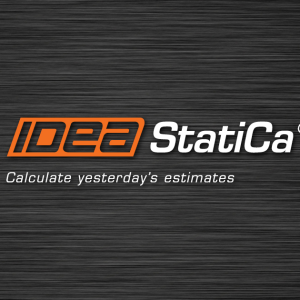Preface
Solve problems in elementary structural mechanics thoughtfully and efficiently with this self-contained volume. Covers the basics of structural mechanics and focuses on simple structures, truss frameworks, beams and frames, design choices, and deformity. Carefully interrogates underlying assumptions for efficiencies in working out whilst expounding fundamental principles for a consistent understanding.
Heavily connects the practical world of indeterminate structures to their analysis, to underline benefits they impart to the latter: that certain analytical methods provide a wealth of efficient solutions for problems of indeterminate structures compared to determinate ones.
Celebrates the beauty of analytical indeterminacy and its relationship to practical structures. Perfect for students invested in structural mechanics, and aims to complement their learning and understanding.
This book is for students already invested in Structural Mechanics. They know about
forces and moments, and couples from pairs of applied forces. They understand the
concepts of equilibrium, compatibility and stiffness; of how beams and pin-jointed
frameworks differ in their constituent behaviour; of the nature of supports; and of the
concept of statical equivalency.
I reflect the usual gradation in complexity and form, moving from bodies to bars,
to cables, and to beams, and sometimes, mixing them up. I consider different metrics
of structural design: of safe loading, of failure by plastic collapse and buckling, of
cross-sectional limitations and joint design, for example.
In particular, I focus on how to think about (and solve) ‘Structures’ problems better.
Formulaic analysis methods are not overly represented because they can be applied
without understanding fully how they work. Instead, I present a dialogue of how
solving proceeds, collated as short chapters of worked examples – without the usual
repetitive exercises at their ends.
I apologise for my greyscale figures. I am a child of the hard-copy age where colour
was taxed, limiting that part of my presentation still. I dispense with denoting vectors
in boldface because the direction of quantity is always implied. Parameters that vary
are italicised, but labels are roman and upright; ‘A’ can be a point in an area ‘A’.
Greek letters typically denote fundamental quantities or dimensionless groups, but
not always.
-
 Bitdefender Total Security Antivirus | Genuine Activation Code$30.00
Bitdefender Total Security Antivirus | Genuine Activation Code$30.00 -
 IDEA StatiCa Education$30.00
IDEA StatiCa Education$30.00 -
 Stealth Writer AI | Bypass AI Detection | Get 100% Human Score$10.00
Stealth Writer AI | Bypass AI Detection | Get 100% Human Score$10.00 -
 Adobe Acrobat XI Professional with License Key Activation$29.00
Adobe Acrobat XI Professional with License Key Activation$29.00 -
 Autocad 2007 – OFFLINE INSTALLER + Video Tutorial Install and activation – LIFETIME$7.00
Autocad 2007 – OFFLINE INSTALLER + Video Tutorial Install and activation – LIFETIME$7.00 -
 ChatGPT PLUS Subscription$7.00
ChatGPT PLUS Subscription$7.00 -
 ESET Internet Security Antivirus | 1 Year License$20.00
ESET Internet Security Antivirus | 1 Year License$20.00 -
 Course Hero Account
Course Hero Account1 month
$10.00 -
 General Software Collection | Request books, Codes, Research Articles | Request Software on Demand$3.00 – $35.00
General Software Collection | Request books, Codes, Research Articles | Request Software on Demand$3.00 – $35.00 -
 Vmware Workstation 16 Pro Lifetime License$150.00 – $199.00
Vmware Workstation 16 Pro Lifetime License$150.00 – $199.00 -
 NORD VPN/IP Vanish Account Subscription 6 Month | 1 Year | 2 Years$20.00 – $60.00
NORD VPN/IP Vanish Account Subscription 6 Month | 1 Year | 2 Years$20.00 – $60.00 -
 Internet Download Manager IDM Version 6.41 fully lifetime activation with installation video | 5 times faster download (Pre-Activated)$6.00
Internet Download Manager IDM Version 6.41 fully lifetime activation with installation video | 5 times faster download (Pre-Activated)$6.00 -
 Adobe Acrobat Pro DC 2024 | 2023 | 2022 | 2021 | 2020 | Latest Full Version | Lifetime$10.00 – $20.00
Adobe Acrobat Pro DC 2024 | 2023 | 2022 | 2021 | 2020 | Latest Full Version | Lifetime$10.00 – $20.00 -
![Solving Problems of Simple Structural Mechanics Book by Keith Alexander Seffen 16 Sketch Up Pro 2025 | 2024 | 2023 | 2022 | 2021 Full Package Bundle + Vray 7 + Enscape 4.4 + Thea Render 3.5 [Lifetime & Full]](https://civilmdc.com/wp-content/uploads/2022/03/SketchUp-2025-300x300.jpg) Sketch Up Pro 2025 | 2024 | 2023 | 2022 | 2021 Full Package Bundle + Vray 7 + Enscape 4.4 + Thea Render 3.5 [Lifetime & Full]$10.00 – $45.00
Sketch Up Pro 2025 | 2024 | 2023 | 2022 | 2021 Full Package Bundle + Vray 7 + Enscape 4.4 + Thea Render 3.5 [Lifetime & Full]$10.00 – $45.00 -
 Adobe 2024 | 2023 | 2022 Full Collection$25.00 – $35.00
Adobe 2024 | 2023 | 2022 Full Collection$25.00 – $35.00



 Visit
Visit 